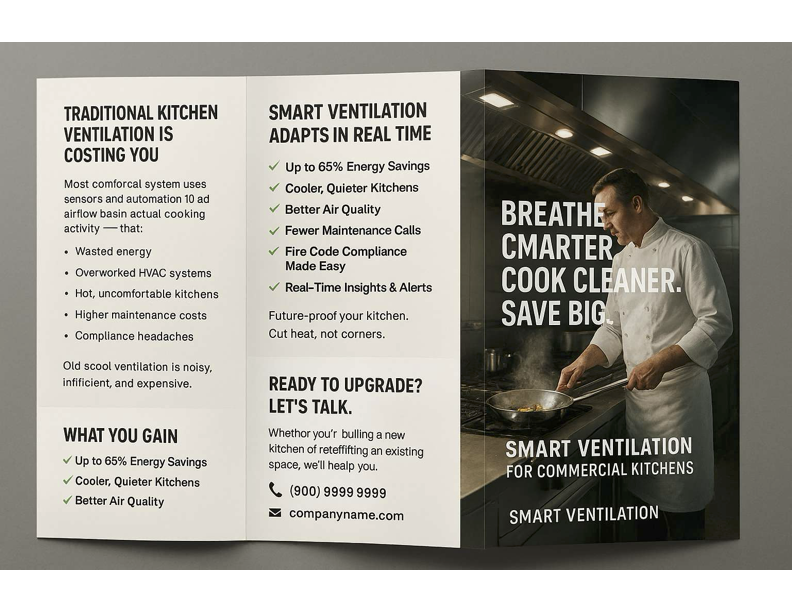Running a commercial kitchen is a high-stakes balancing act. You’re managing heat, smoke, grease, noise, and tight timelines — all while trying to maintain food quality and worker comfort. One of the most overlooked but mission-critical systems in any kitchen? Ventilation. And it’s time to talk about how smart ventilation is changing the game.
What Is Smart Ventilation?
Smart ventilation systems go beyond the basic on/off hoods and exhaust fans. They use sensors, real-time data, and automation to adjust airflow based on what’s actually happening in the kitchen. Whether you’re searing steaks at peak dinner rush or prepping cold dishes in the afternoon lull, the system adapts.
At its core, smart ventilation is about efficiency — not just in energy use, but also in air quality, temperature control, and even kitchen workflow.
The Problem with Traditional Kitchen Ventilation
Traditional kitchen hoods typically run at full blast, all day. That’s like leaving your car running while parked — wasteful and unnecessary.
Some common issues:
-
Energy Waste: Constant high-speed exhaust pulls conditioned air out of the building, forcing HVAC systems to work harder.
-
Poor Air Quality: Inefficient or outdated systems may not remove enough grease, smoke, or particulates, risking health and safety.
-
Uncomfortable Working Conditions: Hot, stuffy kitchens affect productivity and morale.
-
Compliance Risks: Codes and regulations around emissions, grease buildup, and fire safety are getting stricter.
How Smart Ventilation Solves These Problems
1. Demand-Controlled Ventilation (DCV)
Smart hoods use temperature, smoke, and humidity sensors to detect cooking activity. The system ramps up airflow when needed and dials it down when things cool off. That means:
-
Less noise when things are quiet.
-
Lower energy bills.
-
Equipment that lasts longer due to reduced strain.
2. Integrated System Control
Smart ventilation can sync with other building systems — HVAC, fire suppression, even kitchen scheduling software. This helps maintain optimal air pressure and climate without manual adjustments.
3. Remote Monitoring & Analytics
Operators can track performance, get maintenance alerts, and see where they’re wasting energy. Some systems even offer AI-based insights to optimize cooking schedules or ventilation usage.
Real-World Benefits
-
Energy Savings: Some kitchens cut ventilation energy use by up to 65% with smart systems.
-
Improved Comfort: Better airflow means less heat stress and a more comfortable team.
-
Cleaner Air: Efficient filtration and exhaust keeps the kitchen and dining areas safer and more pleasant.
-
Regulatory Compliance: Easier inspections, fewer fire hazards, and staying ahead of code changes.
Who’s Using It?
Major restaurant chains, hospitals, hotels, and food halls are already adopting smart ventilation to cut costs and stay competitive. It’s especially valuable in high-volume or 24/7 operations where energy savings and system reliability make a big impact.
The Bottom Line
Smart ventilation isn’t just a tech upgrade — it’s a strategic move. It helps kitchens run cleaner, cooler, and more cost-effectively. If you’re planning a new kitchen or retrofitting an old one, smart ventilation should be at the top of your list.
Hot air belongs outside. Your profits don’t.

